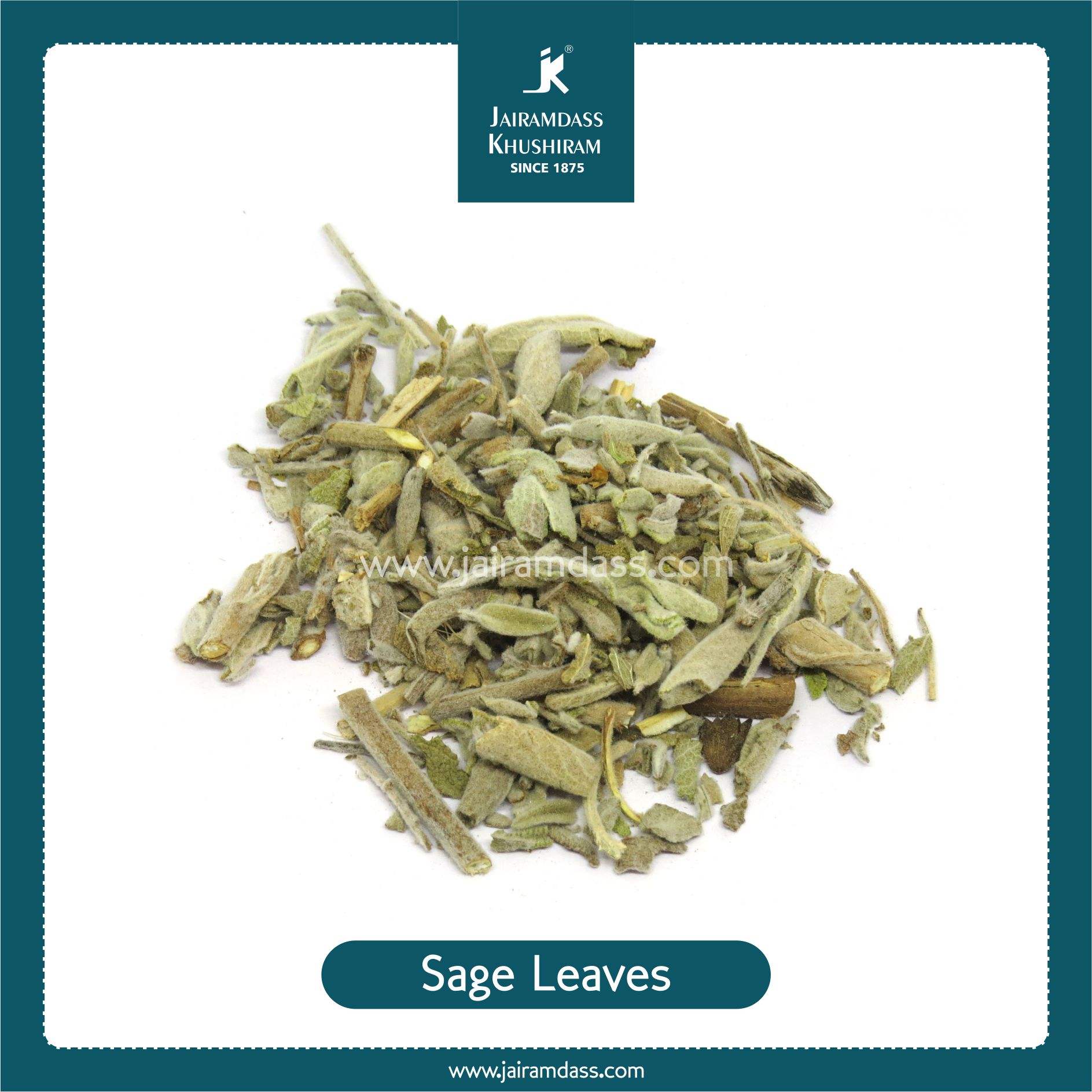Sage Leaves | Salvia Officinalis

Article No:
A0365/A
Botanical Name:
Salvia Officinalis
Other Name:
NA
Assay:
NA
Category:
Make an Enquiry!!
Product Description:
Sage leaves, scientifically known as Salvia officinalis, are aromatic herbs prized for their bold flavor and medicinal properties. These small, velvety leaves boast a distinctive gray-green hue and a soft, slightly fuzzy texture, characteristic of the sage plant. Known for their earthy, slightly peppery taste with hints of mint and eucalyptus, sage leaves add depth and complexity to a variety of culinary dishes. Widely used in Mediterranean and European cuisines, sage leaves are often incorporated into savory recipes such as poultry stuffing, roasted meats, pasta dishes, and soups, where they impart a robust and savory flavor. Beyond their culinary applications, sage leaves have been used for centuries in traditional medicine for their potential health benefits. Rich in antioxidants and anti-inflammatory compounds, sage leaves are believed to support digestive health, improve cognitive function, and boost immunity. Whether employed as a culinary herb or a natural remedy, sage leaves stand as a versatile and esteemed ingredient, enriching both the palate and the body with their aromatic essence and beneficial properties.
Applications of Sage Leaves :
- Culinary Use: Sage leaves are a staple herb in Mediterranean and European cuisines, prized for their robust flavor. They are commonly used fresh or dried to add depth and complexity to a variety of savory dishes, including poultry stuffing, roasted meats, pasta sauces, soups, and stews. Sage leaves can also be fried or baked until crisp and used as a garnish for dishes like risotto or salads.
- Herb Blends: Sage leaves are often included in herb blends and seasoning mixes, such as poultry seasoning and herbes de Provence. These blends combine sage with other herbs like thyme, rosemary, and marjoram to create complex flavor profiles that enhance various dishes, from roasted vegetables to grilled meats.
- Infusions and Teas: Sage leaves can be steeped in hot water to make sage tea, which is consumed for its potential health benefits. Sage tea is believed to have soothing properties and may help alleviate sore throats, coughs, and digestive discomfort. It is also enjoyed for its warm, herbal flavor.
- Medicinal Remedies: In traditional medicine, sage leaves are used for their purported medicinal properties. Sage essential oil, extracted from the leaves, is valued for its antimicrobial and anti-inflammatory effects and is used in aromatherapy and topical applications to promote relaxation, skin health, and wound healing.
- Smudging and Cleansing: In some cultures, dried sage leaves are burned as part of smudging rituals to cleanse and purify the air, spaces, and individuals. This practice is believed to dispel negative energy, promote spiritual cleansing, and enhance mental clarity and focus.
- Ornamental Plant: Sage plants, with their aromatic foliage and spikes of purple or blue flowers, add ornamental beauty to gardens and landscapes. They can be grown in herb gardens, borders, or containers, providing both visual interest and a fresh supply of culinary herbs.



